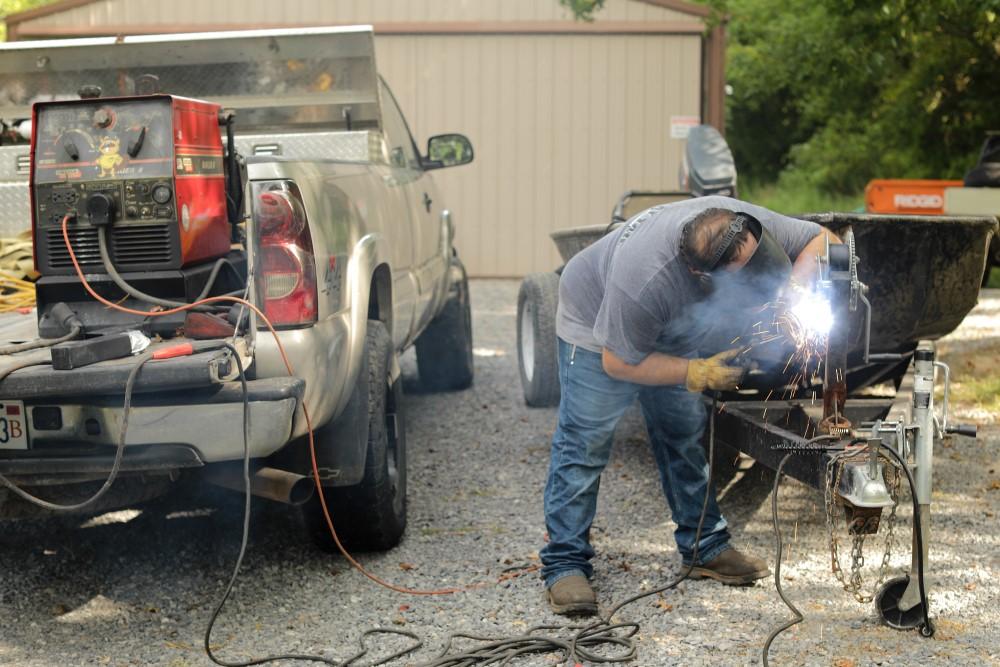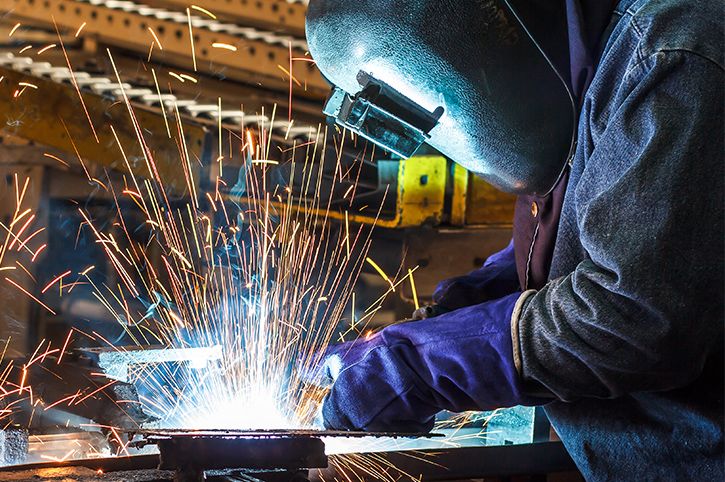Usual Welding Repair Issues and Exactly How to Address Them Efficiently
Welding repairs typically encounter a variety of problems that can endanger the integrity of the end product. Common issues consist of inadequate infiltration, porosity, and imbalance, amongst others. Each problem provides one-of-a-kind difficulties that require particular methods for resolution. Understanding these issues is essential for welders aiming to enhance their abilities and end results. This discussion will certainly discover these common welding repair service problems and effective methods to address them.
Inadequate Penetration
Inadequate infiltration happens when the weld steel falls short to fully fuse with the base material, leading to weak joints and possible structural failings. This problem commonly originates from inadequate warmth input, incorrect electrode angle, or inappropriate welding speed. Welders may come across inadequate infiltration as a result of a miscalculation of the necessary parameters for a details material thickness or type. Furthermore, contamination on the base material's surface can hinder effective bonding, worsening the issue. To attend to inadequate penetration, welders should guarantee ideal setups on their tools and preserve a tidy work surface area. Normal examination of welds is advised to determine any kind of shortages early, permitting prompt modifications and the prevention of jeopardized structural honesty in bonded assemblies.
Porosity
Porosity is a typical defect in bonded joints that shows up as little gas bubbles entraped within the weld steel. This issue can compromise the integrity of the weld, resulting in lowered stamina and prospective failure under stress. Montana Mobile Welding and Repair Welding. Porosity typically develops from contamination, wetness, or improper welding techniques, which allow gases to leave right into the molten weld pool. To attend to porosity, welders must guarantee appropriate surface preparation, keep a clean functioning environment, and utilize suitable welding parameters. Additionally, selecting the right filler material and shielding gas can mitigate gas entrapment. Routine assessment and testing of welds can help identify porosity early, assuring prompt corrective activities are taken, therefore preserving the quality and reliability of the bonded framework
Imbalance
Misalignment in welding can occur from numerous elements, including inappropriate configuration and thermal growth. Recognizing the root triggers is important for reliable resolution. Several correction strategies are readily available to straighten components and assure architectural stability.
Root causes of Imbalance
Welding misalignment commonly comes from a range of underlying concerns that can jeopardize architectural stability. One primary reason is improper fit-up of elements before welding, which can result in spaces and unequal surfaces. Variants in thermal expansion throughout the welding procedure can also cause distortion, especially if the products being joined have different coefficients of development. Additionally, inadequate securing and fixturing may fall short to hold elements safely in position, causing movement during welding. Poorly maintained equipment, including welding devices and devices, may introduce disparities in the weld grain, more adding to imbalance. Ultimately, driver mistake, coming from insufficient training or experience, can also play a substantial role in creating misaligned welds.
Improvement Methods Offered
Resolving imbalance properly requires a combination of corrective strategies customized to the certain problems handy. One typical method is using jigs or components to hold components in the proper setting throughout welding, making certain constant positioning. Additionally, pre-heating the products can assist lower distortion and boost fit-up. For substantial imbalance, mechanical adjustment techniques, such as using hydraulic jacks or clamps, can be utilized to fix the placement before welding. Post-weld heat therapy might likewise be essential to alleviate anxieties brought on by misalignment. Mindful inspection and modification throughout the configuration stage can avoid misalignment concerns from coming to be significant problems, advertising a smoother welding procedure and improving total structural stability.
Distortion
Distortion is a common difficulty in welding that can occur from different elements, including irregular cooling and heating. Understanding the reasons for distortion is vital for carrying out effective avoidance strategies. Addressing this issue not just enhances structural integrity yet likewise enhances the general quality of the weld.
Reasons of Distortion
When based on the intense warmth of welding, materials typically undertake changes that can lead to distortion. This phenomenon largely occurs from thermal development and tightening during the welding process. As the weld area warms up, the product expands; upon air conditioning, it acquires, which can create internal stress and anxieties. In addition, uneven home heating throughout a work surface can worsen these anxieties, causing bending or flexing. The kind of material also plays a considerable role; metals with varying thermal conductivity and coefficients of expansion might react in different ways, causing uncertain distortions. Poor joint layout and insufficient fixturing can add to imbalance during welding, enhancing the possibility of distortion. Recognizing these reasons is necessary for efficient welding repair and prevention techniques.
Avoidance Techniques
Reliable prevention techniques for distortion during welding focus on managing warm input and ensuring correct joint layout. Maintaining a constant warm input helps to reduce thermal growth and contraction, which can result in distortion. Making use of methods such as preheating the workpiece can additionally lower the temperature level slope, advertising uniform home heating. In addition, picking ideal joint designs, such as T-joints or lap joints, can boost stability and lower stress concentrations. Implementing correct fixturing to safeguard the workpieces in position better aids in keeping positioning throughout the welding process. Staggered welding sequences can distribute warmth more equally, preventing local distortion. By applying these approaches, welders can substantially reduce the chance of distortion and enhance the general quality of their welds.
Cracking
Breaking is a typical issue encountered in welding repair services, typically arising from numerous elements you could try here such as improper air conditioning rates, product selection, or inadequate joint prep work. The event of cracks can considerably endanger the stability of the weld, resulting in potential failures during operation. To resolve this issue, welders must initially evaluate the origin triggers, guaranteeing that materials work and suitably chosen for the specific application. Furthermore, regulating the air conditioning price throughout the welding procedure is important; rapid cooling can cause stress and result in splitting. Correct joint layout and prep work likewise add to lessening the danger. Carrying out these strategies can boost weld high quality and toughness, eventually lowering this contact form the probability of fracturing in finished weldments.

Insufficient Blend
A significant concern in welding repair services is incomplete fusion, which happens when the weld steel does not effectively bond with the base material or previous weld passes - Belgrade Welding. This issue can lead to weak points in the joint, potentially jeopardizing the stability of the welded structure. Elements adding to insufficient combination include insufficient warmth input, incorrect welding strategy, and contamination of the surfaces being signed up with. To resolve this problem effectively, welders must guarantee appropriate pre-weld cleansing and surface area preparation, as well as readjust their welding parameters to achieve sufficient penetration and combination. Normal assessment throughout the welding process can also aid recognize incomplete fusion early, permitting timely restorative steps to improve the total top quality of the weld
Overheating
While welding repairs can boost architectural stability, overheating provides a considerable difficulty that can bring about material deterioration. Too much warm throughout welding can change the mechanical properties of steels, causing decreased toughness, boosted brittleness, and bending. This sensation is specifically important in high-stress applications where structural dependability is critical. Determining getting too hot can entail visual examinations for staining or distortion, as well as keeping track of temperature during the welding procedure. To reduce the risks related to overheating, welders need to utilize proper strategies, such as regulating warm input, readjusting traveling speed, and using suitable filler materials. Furthermore, applying pre- and post-weld warmth treatments can help bring back material buildings and enhance the overall high quality of er309l the repair service, guaranteeing long-lasting performance and safety and security.
Often Asked Inquiries
What Are the Typical Indications of a Welding Problem?

Just How Can I Evaluate My Welds for Quality?
To test welds for high quality, one can use aesthetic assessments, ultrasonic screening, and radiographic approaches. Each technique guarantees structural stability, recognizes flaws, and confirms adherence to defined requirements, ultimately boosting the reliability of the bonded joints.
What Security Precautions Should I Take While Welding?
When welding, one should focus on security by using proper personal safety equipment, making certain correct ventilation, safeguarding flammable products away, keeping a tidy work area, and being mindful of environments to avoid injuries and crashes.
Can I Fix a Weld Without Renovating the Entire Joint?
Fixing a weld without redesigning the whole joint is feasible, relying on the damage (Belgrade Fabrication). Techniques such as grinding, adding filler material, or using a welding process can successfully address details defects while preserving the surrounding framework
What Tools Are Essential for Effective Welding Repairs?
Essential devices for reliable welding fixings consist of a welding machine, cord brush, mill, protective gear, clamps, and filler products. Each tool plays a vital function in guaranteeing top quality and safety and security during the fixing procedure. Porosity commonly occurs from contamination, wetness, or improper welding methods, which allow gases to run away into the molten weld swimming pool. Poorly maintained tools, including welding makers and devices, may present inconsistencies in the weld bead, further contributing to imbalance. When subjected to the extreme heat of welding, materials typically undertake modifications that can lead to distortion. Splitting is an usual concern run into in welding repair services, often resulting from different aspects such as incorrect cooling rates, material option, or inadequate joint prep work. A considerable concern in welding repairs is insufficient combination, which takes place when the weld metal does not sufficiently bond with the base material or previous weld passes.